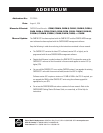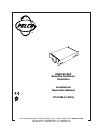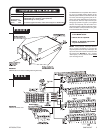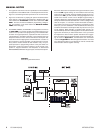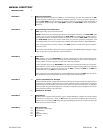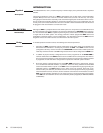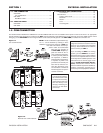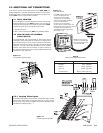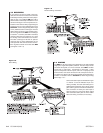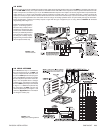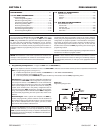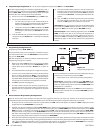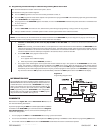
iv C1510M-A (2/03) INTRODUCTION
INTRODUCTION
The CM9760-SAT is a 16 X 4 (16 camera input by 4 monitor output) cross-point video matrix, sequential
switcher.
The physical appearance of the 16 X 4 SAT is dominated by the 16 video inputs (and corresponding
loop-thru BNCs) on the rear of the unit. Four BNC monitor-outs (for local or tie line use), four 12-pin
wiring plugs for other functions and, finally, local and remote keypad ports round out the device connec-
tion list. Aside from confirming whether or not loop-thru operation is part of your configuration, the unit
is ready to be rack-mounted. Remember: there is no “ON/OFF” switch and therefore the unit should not
be plugged in until all connections to it have been made.
Although the SAT is a peripheral device of the 9760 system, it is unique in that a considerable amount
of local programming and control freedom can exist at the downstream or SAT SIDE of the configura-
tion. You can think of the SAT as capable of performing many of the functions normally associated with
a single node of the 9760 system. This analogy extends to include programmed SAT alarm-event
notifications to the 9760 system. In some configurations, you might want to ignore local SAT functions
altogether and use all monitor-out lines as tie lines back to the main system.
To enable operation of these functions, the following tasks must be performed:
1. Physically, the SAT and the 9760 system communicate in full duplex mode via an RS-422 Com
link between the CM9760-CC1 and the port provided on the SAT. Those SAT monitor-out lines
(configured as tie lines), must be run back to the 9760 SIDE and connected as video inputs to the
matrix bay and those monitor-outs not configured as tie lines must be configured for LOCAL use.
2. In addition to physical hookup, configuration files must be programmed on the 9760 SIDE to
make the 9760 aware of the SAT’s existence and to condition tie line connect points. The informa-
tion box found at the beginning of this manual lists the minimum version levels of software needed
by equipment on both sides of the configuration to operate the 9760-SAT system interface.
3. By far, the majority of programming occurs on the SAT SIDE and serves a dual purpose. The first
is to condition the SAT-9760 interface, in particular, the tie line link(s) between the 9760-MXB
and the associated monitor outputs on the SAT. This is accomplished through programming the
applicable entries in the SAT’s Monitor menu. Other menus (for example, those that set up
communication port attributes) are affected as well. The second purpose involves programming
all associated link cameras, monitors, alarms and other connections for PTZ functions and other
SAT sequential switcher operations for use at the local level. Local programming and operation
of the SAT and associated link cameras are controlled by desktop keypads (the KBD200, KBD300
or KBD300V).
Physical
Description
The SAT-9760
Relationship
Setup
Overview



